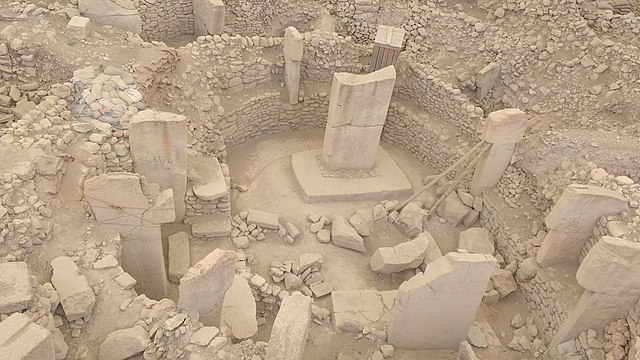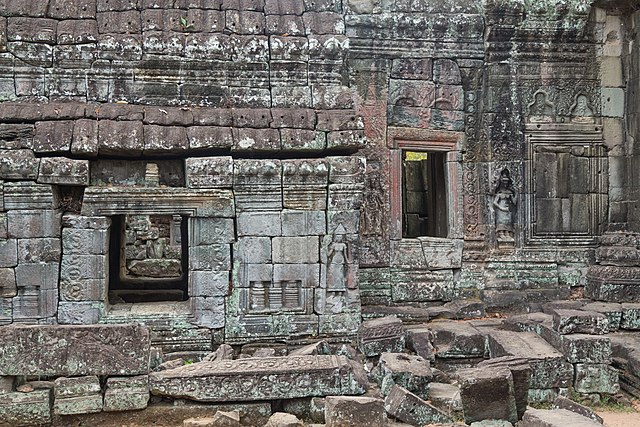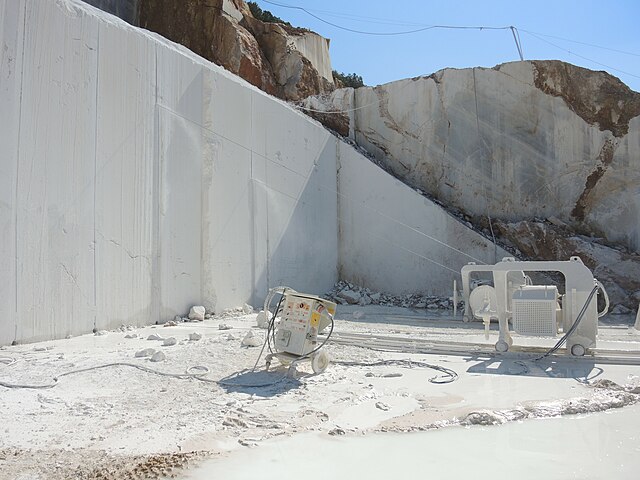Tracery is an architectural device by which windows are divided into sections of various proportions by stone bars or ribs of moulding. Most commonly, it refers to the stonework elements that support the glass in a window. The purpose of the device is practical as well as decorative, because the increasingly large windows of Gothic buildings needed maximum support against the wind. The term probably derives from the tracing floors on which the complex patterns of windows were laid out in late Gothic architecture. Tracery can be found on the exterior of buildings as well as the interior.
Plate tracery, Laon Cathedral, north rose window
Plate tracery, Lincoln Cathedral "Dean's Eye" rose window (c. 1225)
Rayonnant bar tracery, Notre-Dame de Paris, north rose window
Bar tracery with cusped circles, Reims Cathedral, apse chapel
Stonemasonry or stonecraft is the creation of buildings, structures, and sculpture using stone as the primary material. Stonemasonry is the craft of shaping and arranging stones, often together with mortar and even the ancient lime mortar, to wall or cover formed structures.
A 15-storey apartment building in La Tourette (Marseille), designed by Fernand Pouillon. Constructed using the massive precut stone method.
Gobekli Tepe, early monumental Neolithic stonemasonry using flint-carved limestone columns (~9500 BCE).
12th-century stonemasonry at Angkor Wat
Diamond-wire saw in use for quarrying marble.








